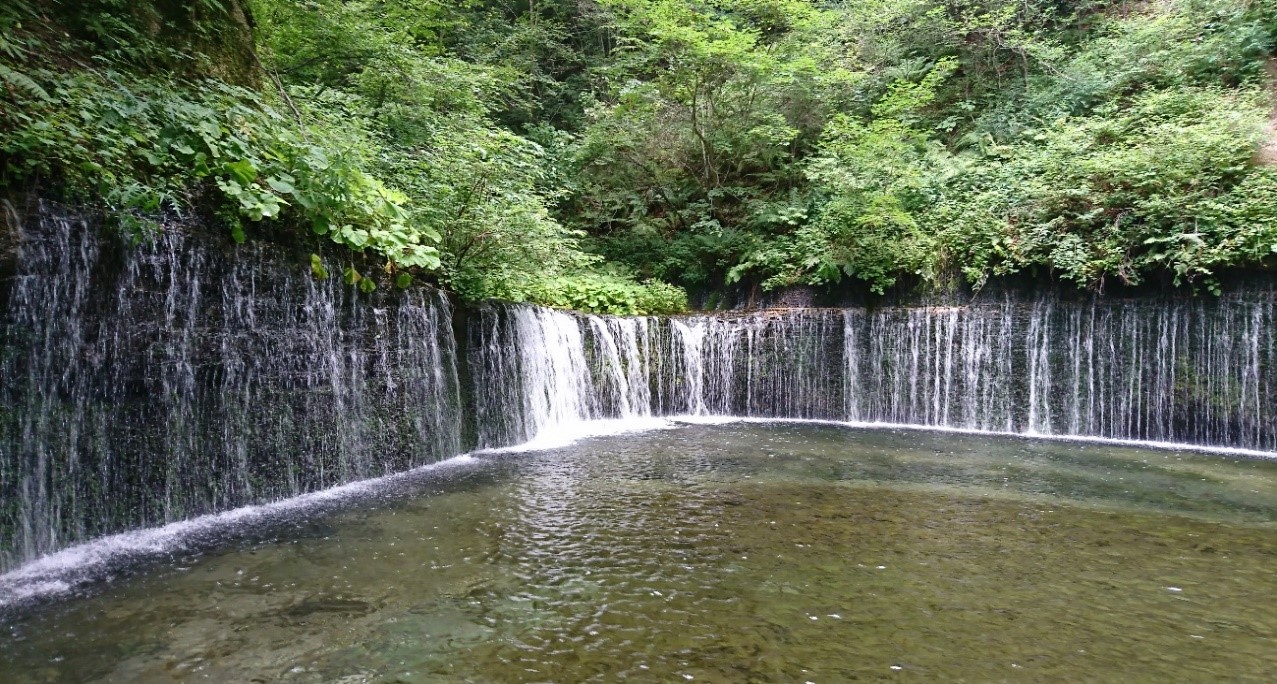企業戦略 2020.02.02
CS 3 関ヶ原の戦い The Battle of Sekigahara
目次
Copyright © Shinichiro Hatani 2020 All rights reserved
For those who prefer to read this column in English, the Japanese text is followed by a British English translation, so please scroll down to the bottom of the Japanese text.
ヨーロッパ大陸を席巻した皇帝ナポレオンの軍隊は、英国への上陸を果たすべく大侵攻軍を組織、1805年10月21日、スペイン沖トラファルガーで英軍と激突した。「トラファルガーの海戦」である。狙撃兵の銃弾に倒れながらも見事に指揮したネルソン提督のもと英軍は一方的な大勝利を飾った。その戦勝を記念して、ロンドンの中心部に造られたのが「トラファルガー広場」である。
下の写真は、ロイズ(Lloyd’s of London)ビルの地下1階、彼の遺品や記念品が展示されている「ネルソン提督コーナー」の一部を写したものである。
The photo below shows a part of Admiral Nelson’s Corner, where his belongings and memorabilia are displayed, on the basement floor of Lloyd’s of London building.

1.関ヶ原の合戦
本年のNHK大河ドラマ「麒麟がくる」を見ていると、つい、その主人公、「知将、明智光秀が、関ヶ原の戦いで西軍の総大将として戦っていたら、後の世が変わったはずだ」と考えてしまう。トラファルガーの海戦より200年程前の1600年、新暦では、ちょうど同じ日、10月21日(旧暦9月15日)、徳川家康を総大将とする東軍と石田三成が束ね、毛利輝元が総大将の西軍が、美濃国(岐阜県)関ヶ原において激突した。
豊臣政権を差配していた秀吉の実弟豊臣秀長が1591年に亡くなると、朝鮮の役の方針や賞罰をめぐり、前線で戦った「武断派」と後方の行政、兵站の分野を担っていた「文治派」との対立は深刻になった。1598年秀吉が亡くなり、続いて翌年、秀頼の後見人であり、家康と並ぶ、「五大老」の上首であった前田利家が亡くなると、家康、武断派の専横が増し、遂には「五奉行」の中心、石田三成の役職を解任、蟄居させる事件が起きた。更に家康は、前田家を巧みに統制下に置き、五大老の一人上杉景勝にも「謀反の疑いあり」と会津上杉征伐に出発、呼応した三成の挙兵によって合戦の素地が整った。
戦いは午前8時頃始まり、午前中は西軍優勢であったが、昼過ぎ、西軍の小早川秀秋の裏切りが起こるや形勢は一気に逆転、西軍は総崩れとなり、東西合せて16万とも言われる大軍決戦の結果がわずか7時間で決着した。明治初期、ドイツから来日、陸軍大学校の教官として日本陸軍近代化の基礎を築いたクレメンス・メッケルが、両軍の布陣を見て、「西軍の勝ちである」と即座に答えた戦いが、なぜ短時間で東軍の一歩的な勝利に終わったのか、その原因は何か。

2.リスクマネジメント組織が要求される進化
組織が拡大すると、ある一定段階ごとに変化と進化が求められる。永遠の拡大は存在しないからである。草履とりから天下人となった秀吉の組織もそうであった。組織の統治、行政手腕が期待される、三成を中心とした「文治派」と呼ばれる事務方の勢いが力を増した。しかし、彼らの戦略に「進化」が顕れることはなかった。天下を統一した後も、秀吉や三成は「更なる領地獲得」という旧来の戦略をそのまま踏襲したのである。7年間にわたる、得るもののなかった朝鮮出兵である。
この不満を抱えながらも「アンシャン・レジーム(旧秩序)」を継続しようとした西軍と、次なる時代、確固たる武家政権樹立を目指して幕藩体制を志向、既に「組織の進化」を起こしつつあった東軍との戦い、「新旧の秩序の戦い」、これが関ヶ原の合戦であった。
関ヶ原に布陣した家康に対して、西軍の総大将に任じられた毛利輝元は大阪城に居残り出陣しない、また実質的に徳川と反徳川の戦いでありながら、「秀頼公のご出馬を」という三成の再三の要請を淀殿が断るなど、それは「トップの不在」という致命的な負のベクトルを戦略の実行に与えることになったのである。
リスクマネジメント組織でも同様である。一旦構築したリスクマネジメント組織は外部環境と内部環境の変化に応じて、変更しなければリスクマネジメント組織自身がボトルネックとなり、リスクの正確な把握と対応がかえって困難になる可能性がある。それほど、現代は「リスクの変容」と表現されるほど、企業を取り巻くリスクが激変しているからである。
かつて、「地震リスク」といえば、地震の揺れによって建物、設備・機械等に起こる物的損害を意味していたが、2011年3月11日の東日本大震災を契機として、国土のほとんどの地域で海岸と接する日本では、「地震のメインリスクは津波」と考えられるようになり、「津波タワー」等の設置もおこなわれてきた。
そして、さらに、長期間水が引かなかった場合のライフラインの崩壊、生産施設の不稼働によって企業が被る収益の低下が問題視されようになってきている。「モノが壊れることのみを地震リスク」と考えていた時代が、東日本大震災を契機として大きく変化したのである。
また、これまでは、「いかに法令を順守するかのみが重要」だったが、昨今ではその時々の社会的な関心や価値観に適応した行動をとっているかが問われるようになってきている。法令を順守していても、社会の期待に反する行動をとれば企業への評価は大きく毀損され、法的な制裁も下されるようになってきている。したがって、リスクマネジメント組織は常に進化していかなければならないのである。
3.リスクマネージャーの「器」
組織の階段を昇っていくと、意見を具申する人の数が減っていくものである。自分を律し、自ら成長していく努力をしなければ、いつの間にか「旧秩序」となる。しかし、組織を昇った人は、往々にして誰かに引き上げられ出世した人が多く、常に上を向いて、上の人の指示に従うことに慣れてしまっている。「自ら成長することができない人ほど上にいる」という矛盾した状態を構造的な問題として抱えている。
家康には、「お聞きいただかなければ殿と一戦仕る」とまで意見して家康を諌めた、徳川四天王の一人、本田忠勝がいた。三成にも、「三成に過ぎたるもの二つあり、嶋の左近と佐和山の城」と謳われた、三成が自分の石高の半分を与えた島左近がいた。左近は、幾度も名戦略を具申した。家康の暗殺計画を勧めた、だが用いられなかった。関ヶ原の前夜も、家康軍への夜襲を進言したが退けられてしまった。関ヶ原の勇猛果敢さが後々まで語り継がれ、敵に畏怖された「左近の知略」を理解できず、彼の能力を使いこなせなかったのである。
三成は切れ者で能吏であったが、「将軍」の器ではなかった。参謀の助言に耳を傾けることができず、また決断力と実行力に欠けていた。「秀吉の存在があっての三成」だったのである。どんなに優れた戦略であっても、組織を統括する「将軍」が存在しなければ活きることはない。
ネルソン提督は「将軍」として、“England expects that every man will do his duty”(英国は総員がその義務を全うすることを期待する)と、後の日本海海戦の「Z旗」に繋がる信号旗を掲げ、全員を奮起させた。ナポレオン軍は、数では勝っていたが、指揮系統が複雑で、戦いに即応できなかった。指揮が明確であれば、戦略もより鮮明になり効用が増す。
関ヶ原の勝敗を決した小早川秀秋も、「西軍の指揮の乱れ」を見て離反したのである。それが「関ヶ原後も続くことになり、早晩、再び戦乱が起きる」と考えたからである。
今回のまとめ
企業の「戦いの場」においても、「間断なき変化」が現代の市場の宿命、「リスクの変容」が常に起きているのである。新しい取り組みも、あっという間にアンシャン・レジームとなる。「対応戦略はどうすべきか」、トップは常に検証と決断が求められる。
このトップに対して、常に「正確な判断、決定のためのIntelligenceを提供すること」をリスクマネージャー、そしてリスクマネジメント部門は求められる。また、そのためには、これらの「リスクマネジメントのデータ」が常にトップへ、瞬時に具に報告される体制が構築されていることが重要である。
そのための方策としては「キャプティブの設立」が適している。常に、トップに報告されるためのシステムに、キャプティブプログラムは「仕組み」としてなっているからである。「保険」に関するデータ・情報は、所管部門長止まりになるのが普通であるが、「キャプティブ」となれば、「子会社であり海外にも関すること」であるので、トップへの報告事項になるからである。
関ヶ原は、こういった、「リスクの正確な分析力」と「対応戦略の実行力」をトップに具申する人、組織、そしてその手段が存在しないときの結果を後世に教えているのではないだろうか。
執筆・翻訳者:羽谷 信一郎
English Translation
Corporate Strategy 3 – The Battle of Sekigahara
Emperor Napoleon’s army, which had swept the European continent, organized a great invasion force to land in Britain and clashed with British forces at Trafalgar off the coast of Spain on October 21, 1805. It was the “Battle of Trafalgar”. Under the leadership of Admiral Nelson, who commanded the battle despite being hit by a sniper’s bullet, the British forces won a great one-sided victory. The Trafalgar Square was built in the center of London to commemorate the victory.
1. The Battle of Sekigahara
Watching this year’s NHK Taiga drama (large-scale,long-running TV series)”The Kiringa Kuru”, I couldn’t help but think that if the main character, “Chisho (resourceful general), Mitsuhide Akechi, had fought at the Battle of Sekigahara as the general of the Western Army, the future in Japan would have been different. In 1600, about 200 years before the Battle of Trafalgar, on the same day, October 21 (September 15 in the old calendar), the Eastern Army, led by Ieyasu Tokugawa, and the Western Army, led by Mitsunari Ishida under Terumoto Mori, clashed at Sekigahara in Mino Province (Gifu Prefecture).
When Hidenaga Toyotomi, Hideyoshi’s younger brother, died in 1591, the conflict between the warring factions, which fought in the front line, and the bureaucrats Faction, which was in charge of administration and logistics, became serious over the policy. After the death of Toshiie Maeda, the head of the “Five Grand Lords”, the tyranny of Ieyasu and his warlords increased, and finally there was an incident in which he dismissed Mitsunari Ishida, the center of the “Five Magistrates”, from his position and put him in prison. Furthermore, Ieyasu cleverly put the Maeda clan under his control, and one of the Five Grand Lords, Kagekatsu Uesugi, was also suspected of treason and started to conquer Aizu Uesugi. The, the groundwork for the battle was laid when Mitsunari raised his troops in response to the conquest of Ieyasu’s Aizu Uesugi.
The battle began at around 8:00 am, and although the western forces were dominant in the morning, the battle was reversed afternoon when Hideaki Kobayakawa of the western forces betrayed them, and the western forces collapsed. Clemens Meckel, who came to Japan from Germany at the beginning of the Meiji era and laid the foundations for the modernization of the Japanese army as an instructor at the Army War College, looked at the formation of the two armies and immediately replied, “The West won the battle,” but why did the battle end in a one-step victory for the Eastern Army in such a brief time?
2. The evolution of the risk management organization required
When an organization expands, it must change and evolve at certain stages. This is because there is no such thing as permanent expansion. The same was true of Hideyoshi’s organization, which had gone from being a crawler to a ruler of Japan. The momentum of the clerical staff, known as the “the bureaucrats Faction,” led by Mitsunari, who were expected to be able to govern and administer the organization, grew in strength. However, there was no “evolution” in their strategy. Even after unifying the country, Hideyoshi and Mitsunari followed the old strategy of “further acquisition of territory”: seven years of exodus to Korea with nothing to gain.
The battle of Sekigahara was a battle between the old and new order, the battle between the Western Army that tried to continue the “ancien régime” (the old order) in spite of this dissatisfaction, and the Eastern Army that had already begun to “evolve” its organization, aiming at the establishment of a firm samurai government in the next era.
In addition, although it was practically a battle between the Tokugawa and the anti-Tokugawa forces, Yodo-dono, Hideyoshi’s wife, refused Mitsunari’s repeated requests for Lord Hideyori to go to war, which gave a fatal negative effect to the implementation of the strategy.
The same is true of risk management organizations. Once a risk management organization has been established, if it does not change in response to changes in the external and internal environments, it may become a bottleneck, making it more difficult to accurately identify and respond to risks. This is because the risks surrounding companies are changing so drastically today that they can be described as “risk transformation.”
In the past, the term “earthquake risk” referred to physical damage to buildings, equipment, and machinery caused by earthquakes. “However, after the Great East Japan Earthquake of 11 March 2011, most of Japan’s land area is bordered by the coast, and the main risk of earthquakes is tsunamis, which has led to the construction of tsunami towers and other facilities.
Furthermore, the disruption of lifelines and the loss of profits for companies due to the non-operation of production facilities if the water does not recede for a prolonged period are becoming more and more of a problem. The Great East Japan Earthquake has brought about a sea change from the days when the only earthquake risk was the destruction of property.
In the past, it was only important to comply with laws and regulations, but nowadays, the question is whether we are acting in accordance with the social interests and values of the time. Even if a company complies with laws and regulations, if it acts contrary to the expectations of society, its reputation will be damaged, and it will be subject to legal sanctions. Therefore, risk management organizations must constantly evolve.
3. The Capacity of Risk Managers
As you move up the organizational ladder, the number of people who offer their opinions decreases. If you don’t discipline yourself and make an effort to grow, you’ll find yourself in the “old order” before you know it. However, many people who have risen through the ranks of an organization have been pulled up by someone else and have become accustomed to always looking up and following the instructions of their superiors. They have a structural problem with the contradictory state of affairs: “The more people who can’t grow up on their own, the higher up they are.”
Ieyasu had one of the four Tokugawa kings, Tadakatsu Honda, who remonstrated with Ieyasu, saying, “If you do not listen to me, I will fight a battle with you”. There was a man named Sakon Shima, to whom Mitsunari gave half of his own clan, who was proclaimed as “Mitsunari has two things that are too much, Sakon Shima and the castle of Sawayama.” Sakon Shima had proposed many excellent strategies. He recommended a plan to assassinate Ieyasu, but it was not used by Mitsunari. On the eve of the battle of Sekigahara, he advised a night attack on Ieyasu’s army, but was rebuffed by Mitsunari. His bravery and courage at Sekigahara was talked about until later, and the enemy’s awe-inspiring “Sakon’s Wisdom” was not understood and his abilities were not used to their full advantage.
Mitsunari was a shrewd and capable bureaucrat, but he was not a “general”. He was unable to listen to the advice of his advisors, and he lacked the ability to make decisions and implement them. It was Mitsunari who got his strength from Hideyoshi’s presence. No matter how good the strategy was, it would not be effective without a “general” to lead the organization. Mitsunari wasn’t General.
As “General”, Admiral Nelson raised the signal flag that “England expects that every man will do his duty” and the signal flag that would later lead to the “Z-Flag” at the Battle of the Sea of Japan. It inspired everyone. Napoleon’s army was outnumbered, but the chain of command was too complex to respond immediately to the battle. When command was clear, strategy was clearer and more effective.
Hideaki Kobayakawa, the man who decided the outcome of Sekigahara, also defected when he saw the “disorder in the command of the western army”. He believed that this would continue after Sekigahara, and warfare would break out again sooner or later.
Summary of this issue
Even in the corporate “battlefield”, “uninterrupted change” is the fate of the modern marketplace, and “risk transformation” is always happening. New initiatives will quickly become an ancien regime. Top management is constantly asked to examine and decide what the response strategy should be.
The risk manager and the risk management department are required to always provide the intelligence to make accurate judgments and decisions to the top management. To achieve this, it is important to establish a system to ensure that these “risk management data” are always reported to top management in an instant.
The establishment of a captive is a suitable measure for this. This is because a captive program is a mechanism for the system to be always reported to the top management. Data and information on “insurance” usually end up in the hands of the head of the department in charge, but once a captive is established, it is a subsidiary of the company and is also related to overseas operations, and therefore a matter to be reported to the top management.
Sekigahara may be a lesson to future generations about the people and organizations that must be able to accurately analyze risks and implement response strategies, and the consequences of not having the means to do so.
Author/translator: Shinichiro Hatani

